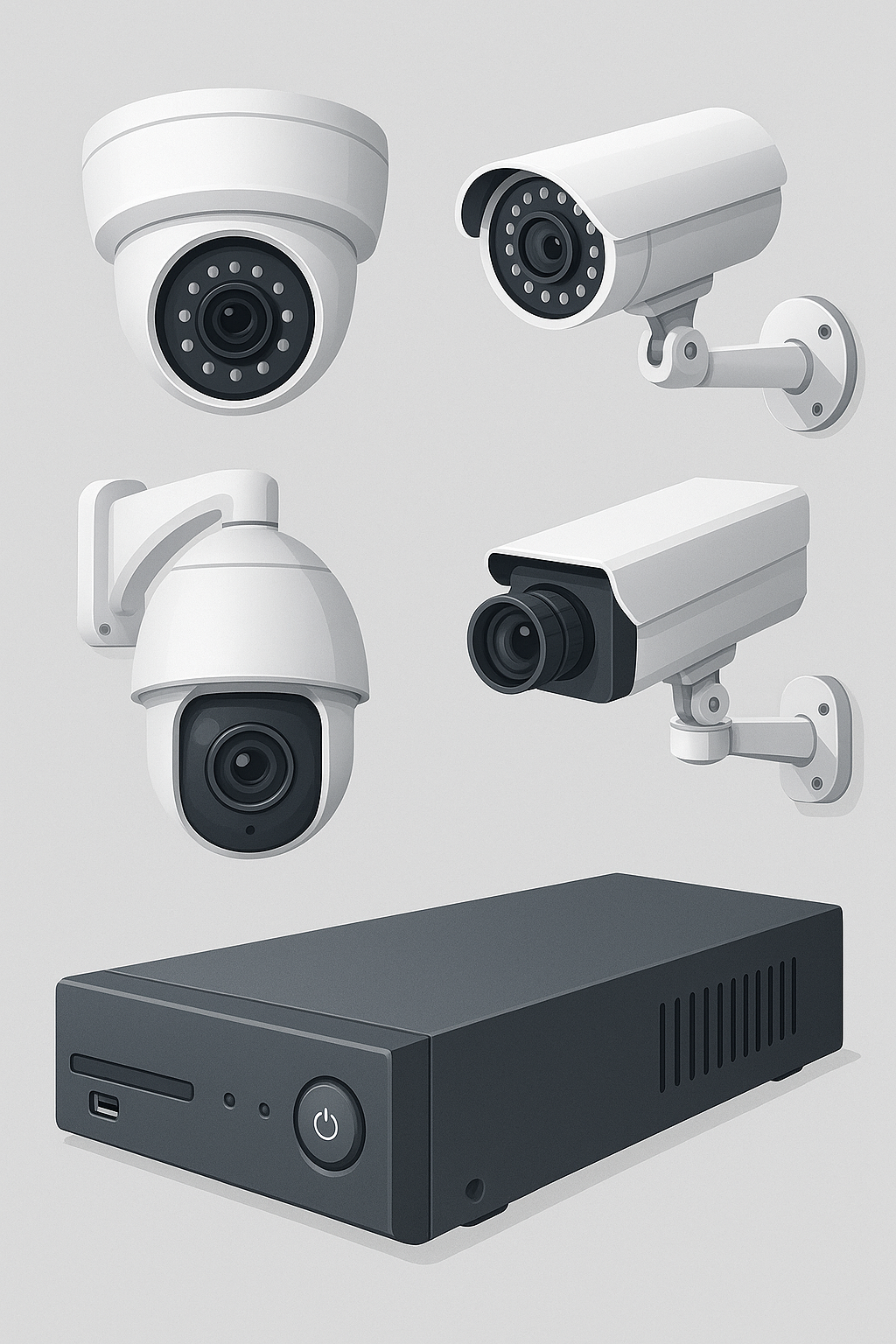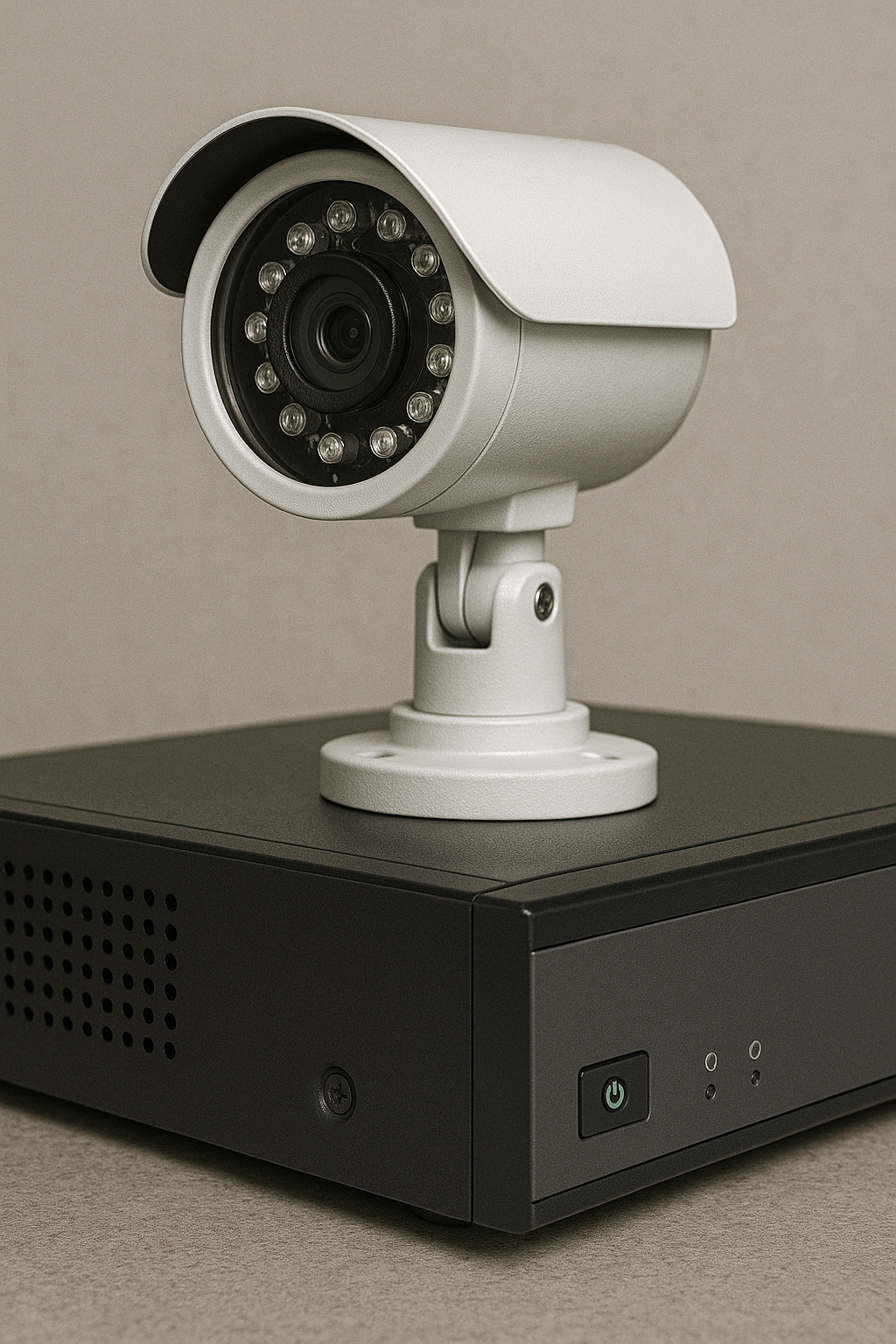Customs Clearance of CCTV Digital Video Recorders (DVR) in Iran (HS Code + Documents & Permits)
Introduction and Uses of Digital Video Recorders (DVR) DVR devices, short for Digital Video Recorder, are key components in modern surveillance and security systems. They are designed to record, store, and manage video feeds received from CCTV cameras and are widely used in commercial, residential, and governmental sites. The way DVRs operate enables more accurate monitoring and review of events, making them an essential element of security systems.

To estimate the time and cost of DVR customs clearance, contact the experts at Saba Tarkhis.
Instant Free Consultation1) Key Features of DVRs Include
2) Key Points in the DVR Clearance Process
Devices with special capabilities: If a DVR offers special features like very high recording quality or support for a very large number of cameras, the tariff line may change and require closer review.
New, advanced models: Newer DVRs featuring advanced technologies like AI and video analytics may fall under different tariff lines. To ensure correct classification and avoid legal issues or delays, consult customs experts. They can determine the correct HS code based on exact product specifications.
3) Required Documents for Clearing CCTV DVRs
1. Commercial Invoice
Product details: Full device name, model, serial number, and technical features of the DVR.
Purchase price: Unit price and total costs, including taxes and freight.
Supplier info: Name, address, and contact details of the supplier/exporter.
Purchase date: To evidence the date of purchase and delivery timeline.
Key points: The invoice should be in English (or locally issued with an official translation). It must be official and stamped/signed by the supplier.
2. Certificate of Origin
Country of origin: Must clearly state the producing/exporting country of the DVR.
Format: Typically includes manufacturer details, goods description, and issuer’s stamp/signature.
Key points: Should be issued by official bodies such as Chambers of Commerce. Provide in English or with an official English translation.
3. Green Customs Permit (Provisional/Final Release Sheet)
Required info: File number, release date, goods details, and declared value.
Forms & process: Must be properly completed and stamped by customs officials.
Key points: Requires coordination with customs systems and completion of specific forms. Carefully verify it to ensure data consistency.
4. Proforma Invoice
Purchase details: Product name/type, quantity, offered price, payment and delivery terms.
Contract terms: Payment method, shipping conditions, and other commercial agreements.
Key points: The proforma must reflect all agreed terms and match the final commercial invoice.
5. Taxes & Import Duties
Duty calculation: Depends on HS Code, goods’ value (CIF), and origin-based tariffs.
VAT: May be added to the final customs value per local regulations.
Key points: Review local tariff schedules and tax rules to budget accurately; pay on time to avoid delays.
6. Standards & Technical Requirements
International: e.g., CE (Europe) and FCC (USA).
National: May include specific electrical safety/EMC requirements in the destination country.
Key points: Obtain necessary conformity and safety certificates. Additional testing may be required for certain markets.
7. Quality & Safety Certificates
Quality certificates: Demonstrate manufacturing quality and conformity to production standards.
Safety certificates: Prove compliance with electrical safety and EMC/environmental requirements.
Key points: Obtain certificates from reputable bodies; verify validity to prevent legal/customs issues. Proper documentation ensures efficient DVR clearance and smooth market entry.
4) Special Conditions for Importing DVRs
Import & Export Volume
5) Best Practices for Clearing DVRs
Document hygiene: Ensure accuracy and completeness of all documents to speed up clearance and avoid delays.
Legal compliance: Adhere strictly to applicable regulations to prevent problems and simplify the process.
| Goods | Short Description | HS Code |
|---|---|---|
| Digital Video Recorder (DVR) | Recording/managing CCTV camera feeds | 8521.90.90 |
The final tariff line may vary based on capabilities (AI/analytics, channel count, I/O) and whether it’s combined with NVR/Hybrid features. HS expert advice is recommended.
Need exact HS classification, permits, and document preparation? Our team manages your case end-to-end.
Request a Proforma
Frequently Asked Questions
What is the HS Code for DVR devices?
Typically 8521.90.90; however, advanced AI/analytics features or NVR/Hybrid combos may alter the classification. Final determination requires the catalog and datasheet.
Which standards are required for importing DVRs?
Depending on origin/destination: compliance with CE, FCC, electrical safety, EMC; in some cases national standards. Providing test reports is recommended.
What are the main documents for clearing DVRs?
Commercial invoice, proforma, packing list, B/L, certificate of origin, green customs permit, CE/FCC certificates, datasheet & catalog, plus any additional required permits.
Specialized Customs Services by Saba Brokerage
With years of experience and expertise in customs clearance, Saba Brokerage provides the following comprehensive, specialized services:
Expert consulting: Accurate, professional advice on tariff classification, required documents, and legal obligations—helping businesses perform effective and compliant clearance.
Document management: Assistance in gathering and reviewing all documents needed for a smooth clearance—ensuring accuracy and completeness of invoices, certificates of origin, and other essentials.
Tariff review & analysis: Detailed analysis of customs tariffs and duties to optimize costs—leveraging appropriate tariff lines to reduce unnecessary expenses.
Process tracking & expedition: Close follow-up of clearance stages to shorten processing times and reduce costs, coordinating every customs step to minimize delays.
Standards support: Ensuring compliance with national/international standards and obtaining required certificates, including quality and safety approvals for market entry.
Issue resolution: Handling disputes and potential issues with customs authorities to keep your clearance process on track and avoid unexpected delays.
With these end-to-end services, your customs process runs optimally and hassle-free. Our professional team supports you with expert advice, document management, and diligent follow-ups so your imports and exports proceed smoothly and with minimal friction.
.png)
